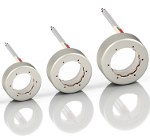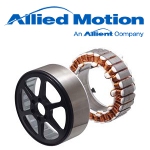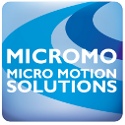 |
| June 23, 2015 | Volume 11 Issue 24 |
Motion Control News & Products
Designfax weekly eMagazine
Archives
Partners
Manufacturing Center
Product Spotlight
Modern Applications News
Metalworking Ideas For
Today's Job Shops
Tooling and Production
Strategies for large
metalworking plants
New micro motor controller elevates precision, speed, and torque management
 maxon, a leader in DC motor and drive solutions, has unveiled its latest innovation: the ESCON 2 controller. This advanced speed and current controller, designed for micro motors, significantly enhances control precision. The ESCON 2, suitable for brushed and brushless DC motors up to 1,800 W continuous duty, is engineered for seamless OEM integration into customer systems. Enhanced control features include field-oriented control (FOC), acceleration, and velocity feed-forward capabilities. Supports 4-quadrant operation. Lots more features. Available from Electromate.
maxon, a leader in DC motor and drive solutions, has unveiled its latest innovation: the ESCON 2 controller. This advanced speed and current controller, designed for micro motors, significantly enhances control precision. The ESCON 2, suitable for brushed and brushless DC motors up to 1,800 W continuous duty, is engineered for seamless OEM integration into customer systems. Enhanced control features include field-oriented control (FOC), acceleration, and velocity feed-forward capabilities. Supports 4-quadrant operation. Lots more features. Available from Electromate.
Learn more and get all the specs.
Next-gen motor for pump and fan applications
 The next evolution of the award-winning Aircore EC motor from Infinitum is a high-efficiency system designed to power commercial and industrial applications such as HVAC fans, pumps, and data centers with less energy consumption, reduced emissions, and reduced waste. It features an integrated variable frequency drive and delivers upward of 93% system efficiency, as well as class-leading power and torque density in a low-footprint package that is 20% lighter than the previous version. Four sizes available.
The next evolution of the award-winning Aircore EC motor from Infinitum is a high-efficiency system designed to power commercial and industrial applications such as HVAC fans, pumps, and data centers with less energy consumption, reduced emissions, and reduced waste. It features an integrated variable frequency drive and delivers upward of 93% system efficiency, as well as class-leading power and torque density in a low-footprint package that is 20% lighter than the previous version. Four sizes available.
Learn more.
Deep learning-based part detection for machine tending cobots: Universal Robots at IMTS
 Universal Robots, the pioneer of collaborative robotics, is set to unveil a new AI-powered machine tending solution at IMTS, enabling faster batch changeovers by eliminating the need for fixtures. Additionally, the company will showcase advanced cobot applications for welding, finishing, part feeding, and laser marking. Lots of useful tech here.
Universal Robots, the pioneer of collaborative robotics, is set to unveil a new AI-powered machine tending solution at IMTS, enabling faster batch changeovers by eliminating the need for fixtures. Additionally, the company will showcase advanced cobot applications for welding, finishing, part feeding, and laser marking. Lots of useful tech here.
Read the full article.
Why air bearings are used to test satellites
 The number of active satellites in space keeps growing, with more than 10,000 active satellites orbiting our planet. Commercial and academic institutions developing these satellites continuously work on improved test systems and methodologies to fully validate their hardware before launch. Learn why PI's 3-DOF spherical air bearing systems are an important part of this process.
The number of active satellites in space keeps growing, with more than 10,000 active satellites orbiting our planet. Commercial and academic institutions developing these satellites continuously work on improved test systems and methodologies to fully validate their hardware before launch. Learn why PI's 3-DOF spherical air bearing systems are an important part of this process.
Read the full article.
8 key advantages of torque motors for advanced applications
 Electric torque motors drive loads at low speed without additional mechanical transmission systems like gearboxes or speed reducers. They are known for smooth operation with less vibration and backlash. Learn the key benefits that make them a solid choice for many applications.
Electric torque motors drive loads at low speed without additional mechanical transmission systems like gearboxes or speed reducers. They are known for smooth operation with less vibration and backlash. Learn the key benefits that make them a solid choice for many applications.
View this informative Parker blog.
Gear motors with QR codes for product info
 NORD DRIVE-SYSTEMS gear motors now come with a QR code sticker on the unit enabling users to access information almost instantly such as product specs, documentation, and service requests via mobile device. The codes can be scanned using a photo app or QR code app and will bring the user to NORD's digital service webpage, which includes a Documentation Center, Spare Parts Shop, customer portal, and more. QR code stickers are now in use at NORD USA's four facilities in Waunakee, WI; Corona, CA; Charlotte, NC; and McKinney, TX.
NORD DRIVE-SYSTEMS gear motors now come with a QR code sticker on the unit enabling users to access information almost instantly such as product specs, documentation, and service requests via mobile device. The codes can be scanned using a photo app or QR code app and will bring the user to NORD's digital service webpage, which includes a Documentation Center, Spare Parts Shop, customer portal, and more. QR code stickers are now in use at NORD USA's four facilities in Waunakee, WI; Corona, CA; Charlotte, NC; and McKinney, TX.
Learn more.
LM guide actuator with right/left ball screw for symmetrical movement
 THK's innovative Type KR-RL Actuator features a driving element that uses right/left threads and enables symmetrical movements with a single motor. Two drive systems are combined into a single package, resulting in a compact overall design. This electric actuator outperforms pneumatic versions by offering precise force control, speed control, a longer life, and energy savings. Applications include gripping, measuring, and positioning for robot hands, screw-tightening machines, cutting equipment, and dispensers.
THK's innovative Type KR-RL Actuator features a driving element that uses right/left threads and enables symmetrical movements with a single motor. Two drive systems are combined into a single package, resulting in a compact overall design. This electric actuator outperforms pneumatic versions by offering precise force control, speed control, a longer life, and energy savings. Applications include gripping, measuring, and positioning for robot hands, screw-tightening machines, cutting equipment, and dispensers.
Learn more.
High-power-density outer-rotor brushless motor
 Allied Motion Technologies has released the new KinetiMax High Power Density (HPD) motor series. This outer-rotor brushless motor is designed for high-torque, low-cogging applications like robotics, AGVs, and handheld power tools. With an efficiency rating of over 85% and a high power-to-weight ratio, it's an ideal motor choice for any application where weight and battery life are critical. Available in six frame sizes, with three stack lengths per size and three windings per stack length.
Allied Motion Technologies has released the new KinetiMax High Power Density (HPD) motor series. This outer-rotor brushless motor is designed for high-torque, low-cogging applications like robotics, AGVs, and handheld power tools. With an efficiency rating of over 85% and a high power-to-weight ratio, it's an ideal motor choice for any application where weight and battery life are critical. Available in six frame sizes, with three stack lengths per size and three windings per stack length.
Learn more.
Universal Robots: Seamless integration with Siemens PLCs
 Cobot leader Universal Robots has integrated the Standard Robot Command Interface (SRCI) into its software. UR is proud to be among the first cobot vendors to offer this functionality, which is a new standard for robotics manufacturers that aims to create a single interface between PLCs and robots. It will ensure customers a frictionless integration with Siemens Programmable Logic Controllers, since Siemens is the first -- and currently only -- PLC Vendor supporting SRCI in the automation market.
Cobot leader Universal Robots has integrated the Standard Robot Command Interface (SRCI) into its software. UR is proud to be among the first cobot vendors to offer this functionality, which is a new standard for robotics manufacturers that aims to create a single interface between PLCs and robots. It will ensure customers a frictionless integration with Siemens Programmable Logic Controllers, since Siemens is the first -- and currently only -- PLC Vendor supporting SRCI in the automation market.
Learn more.
Multi-axis motion control chipset
 The Magellan® MC58000 and MC55000 Motion Control ICs from Performance Motion Devices provide all the advanced motion control required by sophisticated high-precision medical, scientific, automation, industrial, and robotic applications. Available in 1-, 2-, 3-, and 4-axis versions, these programmable devices control brushless DC, DC brush, and step motors and deliver user-selectable profiling modes including S-curve, trapezoidal, velocity contouring, and electronic gearing. High-performance FOC provides high-accuracy, ultra-low noise motor operation.
The Magellan® MC58000 and MC55000 Motion Control ICs from Performance Motion Devices provide all the advanced motion control required by sophisticated high-precision medical, scientific, automation, industrial, and robotic applications. Available in 1-, 2-, 3-, and 4-axis versions, these programmable devices control brushless DC, DC brush, and step motors and deliver user-selectable profiling modes including S-curve, trapezoidal, velocity contouring, and electronic gearing. High-performance FOC provides high-accuracy, ultra-low noise motor operation.
Learn more.
Wheel drive boosts material handling operations
 IDEC Corp.'s new ez-Wheel Assist Wheel Drive (AWD) EW1A Series provides electrical motion assistance for industrial manual material handling equipment. With the help of an EW1A, workers can easily and safely move heavy loads, increasing productivity and efficiency. The modular, all-in-one wheel, gearbox, drive, battery, and control solution is easily integrated into new or existing equipment. Supports a vertical working load up to 400 kg and can transfer loads up to 1,000 kg.
IDEC Corp.'s new ez-Wheel Assist Wheel Drive (AWD) EW1A Series provides electrical motion assistance for industrial manual material handling equipment. With the help of an EW1A, workers can easily and safely move heavy loads, increasing productivity and efficiency. The modular, all-in-one wheel, gearbox, drive, battery, and control solution is easily integrated into new or existing equipment. Supports a vertical working load up to 400 kg and can transfer loads up to 1,000 kg.
Learn more.
Tech Tip: Have you considered a frameless motor?
 With no housing, bearings, or other components beyond the stator and rotor, a frameless motor delivers the most compact, torque-dense motion possible. Instead of its own housing, the motor can be embedded directly within the mechanical design of the machine. Instead of its own bearings, it can use the machine's existing shaft and bearings. Learn from Kollmorgen why a frameless servo motor can be an ideal choice for compact, higher-level assemblies and how to integrate one into your design.
With no housing, bearings, or other components beyond the stator and rotor, a frameless motor delivers the most compact, torque-dense motion possible. Instead of its own housing, the motor can be embedded directly within the mechanical design of the machine. Instead of its own bearings, it can use the machine's existing shaft and bearings. Learn from Kollmorgen why a frameless servo motor can be an ideal choice for compact, higher-level assemblies and how to integrate one into your design.
Read this informative Kollmorgen blog.
DURApulse GS30 AC Drives from AutomationDirect
 Automation-Direct has added new high-performance DURApulse GS30 drives that support several control modes including sensorless vector control, closed-loop flux vector control, and torque control in a compact package. The GS30 series expands the DURApulse family by adding internal tension control loop expanded parameter sets for greater versatility, as well as optional EtherCAT and single- or dual-port EtherNet/IP communication cards. GS30 drives support up to four independent induction motor parameter sets or control of a single AC permanent magnet motor. Sizes up to 3 hp for a 230-VAC single-phase input, 50 hp for a 230-VAC three-phase input, and 100 hp for a 460-VAC three-phase input. This series offers PID control, built-in PLC functionality, and STO capability typically found with more expensive high-performance AC drives.
Automation-Direct has added new high-performance DURApulse GS30 drives that support several control modes including sensorless vector control, closed-loop flux vector control, and torque control in a compact package. The GS30 series expands the DURApulse family by adding internal tension control loop expanded parameter sets for greater versatility, as well as optional EtherCAT and single- or dual-port EtherNet/IP communication cards. GS30 drives support up to four independent induction motor parameter sets or control of a single AC permanent magnet motor. Sizes up to 3 hp for a 230-VAC single-phase input, 50 hp for a 230-VAC three-phase input, and 100 hp for a 460-VAC three-phase input. This series offers PID control, built-in PLC functionality, and STO capability typically found with more expensive high-performance AC drives.
Learn more.
Power steering systems for warehouse and autonomous vehicles
 Allied Motion has introduced the electric power steering (EPS) series for steer-by-wire warehouse vehicles, autonomous AGVs, and similar material transport vehicles. This compact system includes a fully integrated motor, gearbox, controller, and optional output pinion. It is available in three frame sizes and 16 models to cover virtually any electric steering requirement in applications from small pallet lifters to AGVs/AGCs to multi-ton reach trucks. An optional, patent-pending feature, Turning Wheel Absolute Position Control, allows the controller to know the turning wheel position without external sensors.
Allied Motion has introduced the electric power steering (EPS) series for steer-by-wire warehouse vehicles, autonomous AGVs, and similar material transport vehicles. This compact system includes a fully integrated motor, gearbox, controller, and optional output pinion. It is available in three frame sizes and 16 models to cover virtually any electric steering requirement in applications from small pallet lifters to AGVs/AGCs to multi-ton reach trucks. An optional, patent-pending feature, Turning Wheel Absolute Position Control, allows the controller to know the turning wheel position without external sensors.
Learn more.
New brushless motors maximize power density
 Allied Motion Technologies has introduced the KinetiMax 95 High Power Drive (HPD), an outer-rotor brushless motor. This frameless motor is designed to maximize power density for its volume with a nominal output torque of 2 Nm at 2,300 RPM, resulting in 480 W of continuous output power. At only 37 mm axial length, this compact stator-rotor set is an ideal solution for applications such as material handling systems, AGVs, mobile robots, handheld power tools, and more.
Allied Motion Technologies has introduced the KinetiMax 95 High Power Drive (HPD), an outer-rotor brushless motor. This frameless motor is designed to maximize power density for its volume with a nominal output torque of 2 Nm at 2,300 RPM, resulting in 480 W of continuous output power. At only 37 mm axial length, this compact stator-rotor set is an ideal solution for applications such as material handling systems, AGVs, mobile robots, handheld power tools, and more.
Learn more.
Army outfits first vehicles with electronic stability control
By Charles Parsons, Army Program Office, Mine Resistant Ambush Protected Vehicles, PEO Combat Support & Combat Service Support, Red River Army Depot, TX
Soldiers laud the ballistic protection that Mine Resistant Ambush Protected, or MRAP, vehicles provide them against underbody threats, but now a brand-new MRAP feature, the first of its kind for the U.S. Army, will help maximize warfighter safety and survivability.

MRAPs are the first Army vehicles to be outfitted with electronic stability control. Here, ESC is being tested on a vehicle that has "training wheels."
Electronic stability control, or ESC, is a computerized technology designed to improve vehicle stability and has been common in commercial automobiles for more than a decade. Thanks to a development effort initiated in 2010 by the U.S. Army's Program Office for MRAP vehicles, also known as APO MRAP, the entire MaxxPro Family of MRAPs will soon sport ESC. This integration makes MRAPs the first U.S. Army vehicle platform to incorporate this important safety technology that is intended to reduce the number of MRAP rollovers. ESC installation aboard MaxxPro vehicles began in late 2014 at Red River Army Depot, TX, and West Point, MS, and is scheduled to finish by the end of fiscal 2017.
What's more, this marks an important step in integrating "driver assist" technologies through an evolutionary approach toward delivering autonomy-enabled warfighter capabilities relevant to Force 2025 and beyond.
"It just makes sense," said Lt. Col. Elliott Caggins, the APO's Vehicle Systems product manager. "We have developed the most ballistically survivable tactical vehicle platform possible. We need to make sure that it is as safe in all aspects of operation, not just for enemy threats."
"This technology will increase operator safety and confidence, making the platform that much more effective," Caggins added.
The Department of Defense designed and rapidly fielded MRAPs to provide increased crew protection and vehicle survivability against enemy threats like improvised explosive devices, mines, small-arms fire, rocket-propelled grenades, and explosively formed penetrators. To withstand the greatest underbody threat, the highest amount of distance from the bottom of the vehicle to the ground is required. However, maximizing this distance raises the vehicle's center of gravity and reduces stability, giving MRAP vehicles like the MaxxPro a higher propensity to roll over.
Since MaxxPro fieldings began in 2007, Soldiers have been involved in several rollovers. Most were fall-initiated, meaning the roadway underneath collapsed; but others were maneuver-related. Both kinds of rollovers, sadly, resulted in injuries or fatalities. While ESC would not have prevented the fall-initiated incidents, it would have reduced or eliminated the maneuver-related rollovers, saving Soldiers' lives and avoiding millions of dollars in materiel damage.
"The addition of ESC on the MaxxPro Dash, as well as the MRAP family of vehicles, can make a substantial improvement in safety and performance," said Tom Stafford, the U.S. Army Maneuver Center of Excellence's MRAP capability developer. "The system forgives driver inexperience and helps the more experienced driver when the unexpected happens."
When driving, the driver continuously scans the environment, assessing road conditions, as well as stationary objects. He or she takes these inputs, along with their vehicle's own speed, direction, engine RPM, braking, and "spatial feel," to make continuous calculations and adjustments to maintain safe vehicle control. Even professional drivers can't always take all of this information and make the best operating decisions, especially when there is a need for an emerging evasive maneuver such as a vehicle losing a load or an unexpected obstacle like a small child chasing a ball into the road. A vehicle threat like a vehicle-born IED magnifies the situation exponentially for Soldiers.
ESC can help military drivers because it takes all the vehicle factors, combines them with driver intent, and determines if the vehicle is operating in an unsafe manner that would result in loss of vehicle control or a potential roll over.
"Nevertheless, ESC cannot substitute for comprehensive drive crew training and involved leaders," Stafford emphasized.
Working with experienced government agencies and commercial partners allowed APO MRAP to apply years of collective ESC experience to the MaxxPro fleet.
"We worked with Bendix, who has been a critical partner with Navistar and has been working on ESC for our commercial line since 2007, and leveraged that experience into the design of the MaxxPro system," stated Scott Zion, Navistar Defense's MaxxPro chief engineer. "This helped us reduce program cost, schedule, and risk."
The ESC system is also a relatively mature technology. In the 1980s, BMW started developing the technology for its passenger cars. Understanding the positive impact ESC can have on highway safety, the National Highway Traffic Safety Administration mandated ESC be installed for all passenger cars, light trucks, and SUVs manufactured after 2011.
For the Army, implementing ESC aboard MRAP vehicles is a natural progression for an already advanced automotive platform. It uses the vehicle anti-lock braking system time data received through the vehicle Controller Area Network (CAN) bus. It takes that data and the intent of the driver in a sensor in the column to intercede when necessary to prevent an unsafe vehicle driving condition. It seamlessly restricts engine power and applies braking at each wheel until the vehicle has passed the "unsafe" threshold. It then slips quietly into the background and allows full driver control when monitoring and waiting for the next time to intervene.
The system is fully automatic, but it can be turned off if the conditions require, such as slippery off-road conditions with low traction. The system can also be an enabler for future fully autonomous vehicles.
In order to ensure a smooth vehicle integration, the product office conducted a user evaluation in July 2012 at the Nevada Test Center to gauge user interest and determine if military drivers considered it useful if integrated onto their vehicles. MRAP MaxxPro and MRAP All Terrain Vehicles, or M-ATV, were evaluated in several driving conditions with and without ESC-equipped vehicles. Overall, interest in and user confidence was very high.
In fact, the user evaluation report states, "The belief that the ESC system made operating the vehicle safer was unanimous. Additionally, it was widely believed the ESC system would benefit inexperienced MRAP vehicle drivers for both training and operational purposes."
"The participants for the most part," the report continues, "expressed complete trust in the ESC systems to perform as it was designed."
MaxxPro's final ESC configuration was completed earlier this year and is slated for installation on 2,633 MaxxPro Dash MRAPs in fiscal 2015-2016 reset, along with 301 new MaxxPro long-wheel-base ambulances manufactured in FY15. Future plans include integrating ESC onto other Army MRAPs.
Published June 2015
Rate this article
View our terms of use and privacy policy

